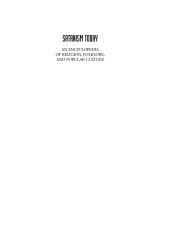I. VAMA MARGA Foundations Of The Left-Hand Path - staticfly.net
I. VAMA MARGA Foundations Of The Left-Hand Path - staticfly.net
I. VAMA MARGA Foundations Of The Left-Hand Path - staticfly.net
Create successful ePaper yourself
Turn your PDF publications into a flip-book with our unique Google optimized e-Paper software.
some aspects of Tantra. His highly recommended works on Tantricism,<br />
which are at their best when describing the way of the left-hand path, are<br />
authoritative enough to have been published in India, something which rarely<br />
occurs with Western authors. It is difficult to say whether Evola was merely a<br />
brilliant esoteric theoretician and scholar or an actual practicing magus. Like<br />
Bataille, a key to Evola's thought is the attainment of a heroic sovereignty,<br />
the recreation of one's self as a "Kingly man," in the language of Naglowska's<br />
doctrine of the Third Term. Ultimately, Evola's austere hermetic approach to<br />
initiation is worlds apart from the somewhat romantic Luciferian sexuality of<br />
Naglowska, but the brief romance of these Western adepts of the sinister<br />
current is a fascinating footnote in the modern development of the left-hand<br />
path.<br />
One of the writers who came into Maria de Naglowska's orbit was the<br />
American journalist, author and erotic explorer William Seabrook. <strong>Of</strong> lesser<br />
intellectual stature than Evola and Bataille, Seabrook's specialty was the<br />
writing of rather sensational exposés of occult subjects. His better known<br />
books include <strong>The</strong> Magic Island, a pioneering study of Haitian Voodoo and<br />
the cult of the zombie, a subject which Naglowska has also studied, and<br />
Witchcraft: Its Power In <strong>The</strong> World Today, which provided pre-World War II<br />
Americans with some of the only knowledge of contemporary magical<br />
practice available. <strong>The</strong> prolific pornographic author Frank Harris introduced<br />
Seabrook to Aleister Crowley, who engaged Seabrook's wife as one of his<br />
sex-magical partners – with her husband's blessings. Seabrook shared with<br />
Crowley an absorbing interest in the use of bondage and sexual slavery as a<br />
magical technique. According to one of Crowley's final interviews, Seabrook<br />
"always traveled with a case-load of chains, being a masochist as well as a<br />
sadist."<br />
Upon seeking out the celebrated Naglowska's Satanic temple as a<br />
potentially juicy subject for one of his journalistic pieces, Seabrook<br />
discovered that some of his best liked fetishes – sexual suspension and erotic<br />
autoasphyxia – had been incorporated into the Sophiale's religious<br />
celebration of the Mystery of Hanging. Overall, however, one gets the<br />
impression that Seabrook was something of a dilettante, who ingratiated<br />
himself into magical circles in search of colorful copy, and whatever erotic<br />
diversion he might find along the way. Crowley acknowledged that<br />
Seabrook possessed "genius" but ultimately dismissed him as having "a<br />
236<br />
journalist's mind."<br />
Fraternitas Saturni – Satana And Her Gnosis<br />
Naglowska's Fraternity of the Golden Arrow was not the only European<br />
Order in the 1920s and 1930s to fuse a form of sinister current sex magic<br />
and an idiosyncratic vision of Lucifer and Satan in its doctrine. Before we<br />
look into the impact of the far more well-known German sex magical school<br />
known as the O.T.O., a contemplation of its obscure semi-associate,<br />
Fraternitas Saturni, or Brotherhood of Saturn, will provide us with an<br />
intriguing example of how some of the sexual initiatory teachings of the<br />
Pastern Vama Marga were adapted by Western magicians. In the case of the<br />
Fraternitas Saturni, we have a uniquely Teutonic initiatory school thats<br />
influence has never successfully been transplanted into Anglo-American<br />
culture.<br />
Since the ni<strong>net</strong>eenth century, there had been a thoroughgoing<br />
fascination with all things Indian prevalent among the German intelligentsia.<br />
German and Austrian Indologists looked to India as the forgotten source of<br />
Teutonic civilization. For post-Nietzschean German intellectuals seeking to<br />
break with the Judaeo-Christian heritage they interpreted as an alien doctrine<br />
imposed by force upon Europe, the recently rediscovered Aryan mythology<br />
of India was enthusiastically embraced as the West's true spiritual<br />
fountainhead. This thread became a powerful impetus for German
















